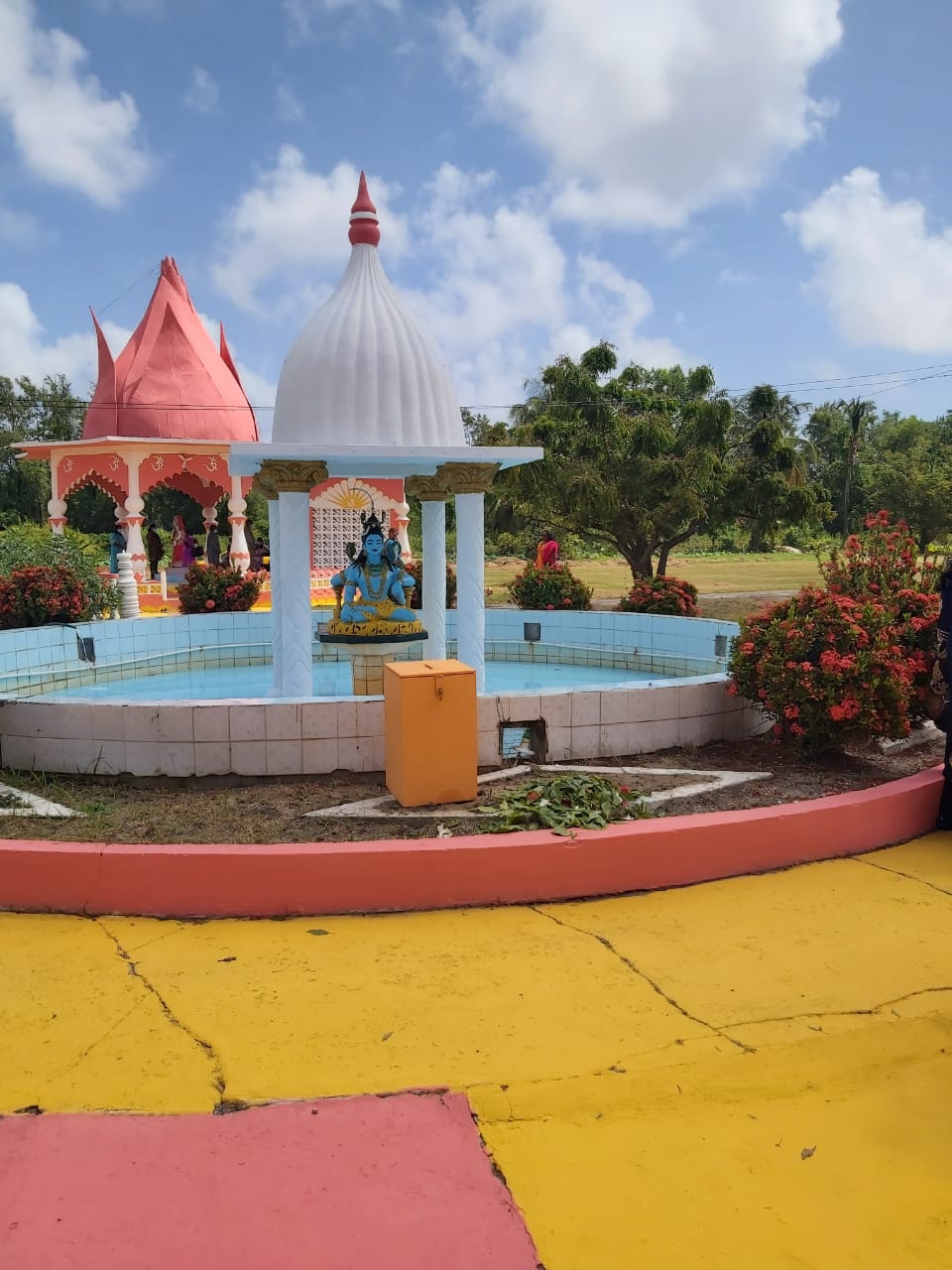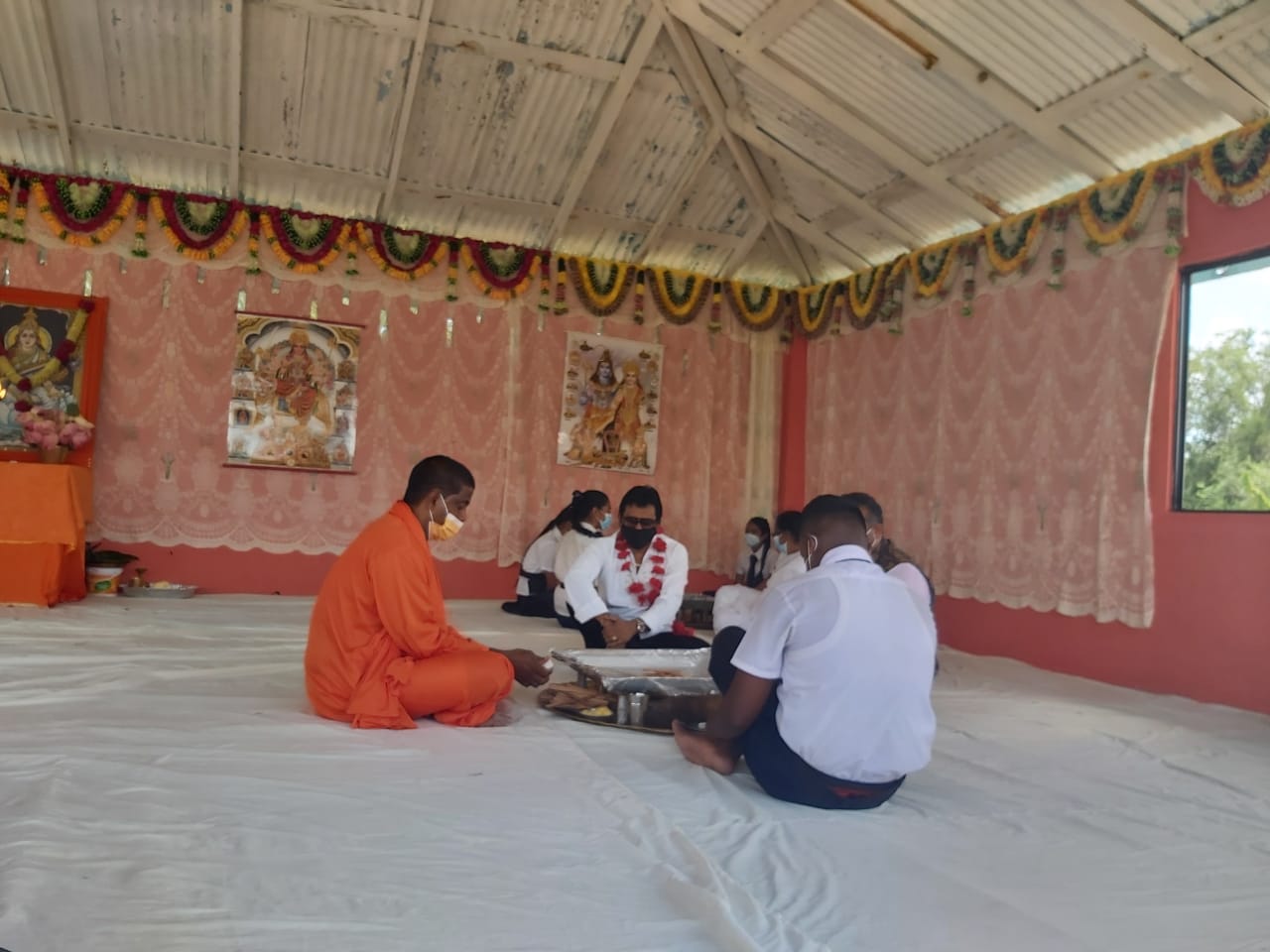Hindus, throughout the world, are observing the sacred festival of Maha Shivaratri today.
In the Hindu calendar, Shivaratri is celebrated on the 14th day of every month but among those 12 Shivaratris, one is set aside as Maha Shivaratri— which translates into the Great Night of Lord Shiva.
Maha Shivaratri is dubbed as the most sacred festival of Shiva and usually falls sometime between February and March.
Throughout Guyana, thousands of Hindus would gather at their various Mandirs at certain auspicious intervals to offer their prayers to Shiva.

With COVID-19 protocols in place, the observance of Maha Shivratri, this year is somewhat different with Mandirs having multiple services thought the day to adhere to the guidelines. The COVID-19 curfew also makes the celebration different because rather than having a 24-hour congregation, Mandirs have to now reduce their services between the hours of 05:00h and 22:30h.
Over the years, the Guyana Sevashram Sangh or the Cove and John Ashram, as it is referred to, has become the pilgrimage ground for many Hindus on Maha Shivaratri.
Lord Shiva in Hinduism is known as The Destroyer of all things evil. He is also revered as the God of Yoga and meditation since he is constantly in a meditative state. In observance of the auspicious occasion, devotees of Shiva stay awake the entire night chanting and offering prayers at the auspicious times. They also engage in various forms of meditation.

Hindus believe that praying to Shiva on the day of Maha Shivaratri blesses one with benevolence and prosperity as Shiva is revered as Mahadev.
Shiva is said to be the soul of everything and Maha Shivaratri is an occasion to remember the eternal truth of Shivoham, meaning “I am that principle. I am Shiva. I am the truth, benevolence, eternity, beauty.”

Maha Shivaratri is solemn and marks a remembrance of overcoming darkness and ignorance in life and the world.
Ardent devotees would remain awake and meditate on ethics and virtues such as self-restraint, honesty, non-injury to others, forgiveness, and the discovery of Shiva. They would also constantly chant “Om Namah Shivaya”, the sacred mantra of Shiva, to invoke his presence in an effort to complete their prayers.
Maha Shivaratri observances include poojas (prayers), abhisheka, fasting and staying awake at night with prayers and meditations. Devotees observe fasting on the day before the Maha Shivaratri night. Some people have food only once, while some follow a fruit and milk diet.
Abhisheka or bathing the Shivalinga is performed using milk, honey, sugar, ghee, black or white sesame seeds, Ganga jal, etc. After this, sandalwood paste and rice are applied to Shivalinga and fresh fruits and flowers are offered.
Shiva Purana states that on Shivaratri, one should bathe Shivalinga with water, milk, honey, and bael leaves which symbolise purification of the soul. They must apply vermillion or kumkum which signifies virtue; offer fruits which signify longevity and gratification of desires; burn incense symbolising wealth; light lamps which signify the attainment of knowledge; and offer paan leaves marking satisfaction with worldly pleasures.
On Maha Shivaratri day, the planetary positions evoke the spiritual energies and help a person rise to the spiritual level. The benefits of mantras such as Maha Mrityunjaya Mantra increases and the religious penances including yoga and meditation get more effective.











